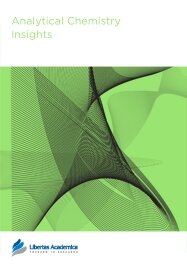

Publication Date: 06 Dec 2007
Journal: Analytical Chemistry Insights

1Department of Materials Science and Engineering, 2Department of Applied Chemistry and Biotechnology, Graduate School of Engineering, University of Fukui, Bunkyo 3-9-1, Fukui-Shi 910-8507, Japan.
Abstract: This research shows a novel method for hazard identification of a chemical and UV light on a single cell level with a laser probe beam. The laser probe beam was passed through interface of cell membrane/culture medium of a cultured human hepatoblastoma cell line HepG2. Deflection of the laser probe beam, which was induced by changes in concentration gradients due to the active materials movement across the cell membrane, was monitored. When a toxic hazard existed, a living cell was expected to be killed or injured, or cellular behaviors to be changed greatly. Then, the changing deflection signal from the living cell would become unchanged or altered in a different way. This was successfully demonstrated with cytotoxity of UV light and H2O2. Most of the cultured HepG2 cells showed changing defl ection signals after 10 min illumination of UV-visible light longer than 370 nm, while almost all HepG2 cells showed unchanged deflection signal after 10 min illumination of UV-visible light with wavelength longer than 330 nm. The results suggested that UV light between 330–370 nm could kill the cells. Additions of H2O2 solution with different concentrations to the cell cultures caused the changing deflection signal from a living cell either unchanged or changed in different trend, suggesting toxicity of H2O2 to the cells. The results from the beam deflection detection agreed well with those obtained by the conventional trypane blue method.
PDF (566.78 KB PDF FORMAT)
RIS citation (ENDNOTE, REFERENCE MANAGER, PROCITE, REFWORKS)
BibTex citation (BIBDESK, LATEX)
XML
PMC HTML

I have published more than thirty research papers in internationally reputed high impact factor journals including Libertas Academica publications, Proteomics Insights and Analytical Chemistry Insights. I have no hesitation in saying that Proteomics Insights is highly efficient for its rapid and high quality review process and keeping the authors informed at each stage of the publication process. I recommend this journal for students, teachers and research workers who wish to publish their work. ...

All authors are surveyed after their articles are published. Authors are asked to rate their experience in a variety of areas, and their responses help us to monitor our performance. Presented here are their responses in some key areas. No 'poor' or 'very poor' responses were received; these are represented in the 'other' category.See Our Results
Copyright © 2013 Libertas Academica Ltd (except open access articles and accompanying metadata and supplementary files.)
FacebookGoogle+Twitter
PinterestTumblrYouTube